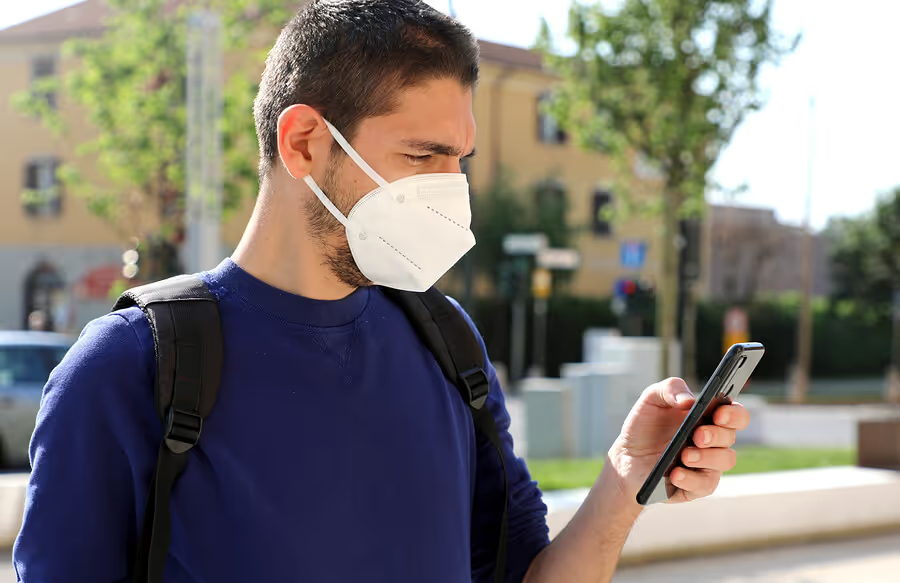Business Texting in Stressful Times: What to Do and What to Avoid
Here’s what we’ve learned about how to best connect in turbulent times — and some tactics to avoid.
Published
June 19, 2020

If 2020 has taught us anything so far, it’s to expect the unexpected. From a global pandemic to murder hornets, it’s a year that’s pushed us to be comfortable with uncertainty.When you’re reaching out to your business contacts, a lot of uncertainty and change can make it tricky to make a connection. If you’re hesitant to fall back on your 2019 outreach strategy right now — you have good reason. This year requires that you think outside the box.Here’s what we’ve learned about how to best connect in turbulent times — and some tactics to avoid.
Be thoughtful about your greetings and sign-offs
The tone, language, and emotion of your greeting and sign-off can signal to your contacts that you’re aware that it’s not business as usual. Think of it as a recognition sandwich that helps you get your message across.Mike Reid, founder and CEO of Basecamp Strategy, a Washington, DC-based political fundraising company, puts it like this: “In the first sentence of an email you have to acknowledge: ‘I hope things are okay, I hope you are well, considering.’ I think that can actually lead to a more meaningful interaction.”As with email, when you’re sending business text messages, small language changes can have a big impact:
- “Hope you’re well” may be more appropriate than “Hope you’re having an awesome week!” during rough times — an overly positive greeting can be insensitive to contacts who are struggling
- “Stay safe” is a brief, kind way to recognize that times are tough.
- “Take care” and “Be well” are gentler sign-offs than “All best,” which can seem cold
Use multiple channels of communication
When you want to get your message across during stressful times, implementing a multi-channel communication strategy is a great way to connect.During the pandemic, with many people still social isolating, your audience may be more plugged in than ever before. But, with things like constant Zoom meetings, more online conferences, and a slew of virtual graduations — it also means your audience’s online attention is even more in demand.Changing up how you reach out will give you a better chance of getting ahold of your contacts. And business text messaging is a great way to make all of your other outreach more powerful.For example, many of our clients have found that a quick text message before a phone call makes contacts more likely to respond.The same is true of the one-two punch of a text message to draw attention to a recent email.
Share info your contacts need
When times are tough, the messages that you send should be helpful. That doesn’t mean that they have to all need to include tips from the CDC — but they should show the unique value that your company can provide to contacts.Here are some tips on how to make sure your outreach is relevant and valuable:
- Listen to what your audience really needs in the moment. The best messages are those that respond with empathy to the situation.
- Tailor the message to what’s relevant to your company’s mission. You don’t need to move out of your wheelhouse to respond to a crisis — start right where you are.
- Provide action-oriented information. Instead of offering platitudes, give generous discounts, thoughtful changes in service, and other resources that respond to real needs.
Don’t over-communicate
While you do want to give your audience every opportunity to connect with you, in turbulent times, people’s attention is often divided. If you aren’t getting a response, don’t go overboard.In a recent analysis of sales emails sent during the pandemic, Hubspot found that sales teams have increased their outreach by up to 67% during the pandemic. And at the same time, recipients’ response rates, on the whole, have plummeted by as much as 33%.Don’t drive your contacts away. Be mindful of their engagement level with you, and if you see response rates plummeting, reconsider your outreach strategy and make sure it’s appropriate.
Don’t make it all about you
Augie Ray, Vice President Analyst of Customer Experience for CX at Gartner, gives a few examples of off-the-mark outreach from his email inbox at the beginning of the pandemic.Ray writes, “My mortgage company, with whom I have a completely digital relationship, felt it needed to email me “An important message” simply to say, The health and safety of our customers and team members is – as always – the most important thing to us. How does this company, which merely processes my auto-payments once a month, have any impact on my physical health?”Washington Post columnist Alexandra Petri wrote in March, “I’m sure the first question on your mind right now is: ‘How is the candle shop/storefront gym/pottery-painting place/kayak rental company that I patronized once, so long ago that I no longer remember the circumstances, coping in this time of trial?’ Well, buds, we are meeting the challenge head-on, in the only way we know how. Our company way!”So, while you do want to reach out if you have something to say, reaching out just to check a box can make you seem out of touch, intrusive, or too self-focused.
Continue Reading
Frequently Asked Questions
Business Texting
Built for Results
Create and convert pipeline at scale through industry leading SMS software




